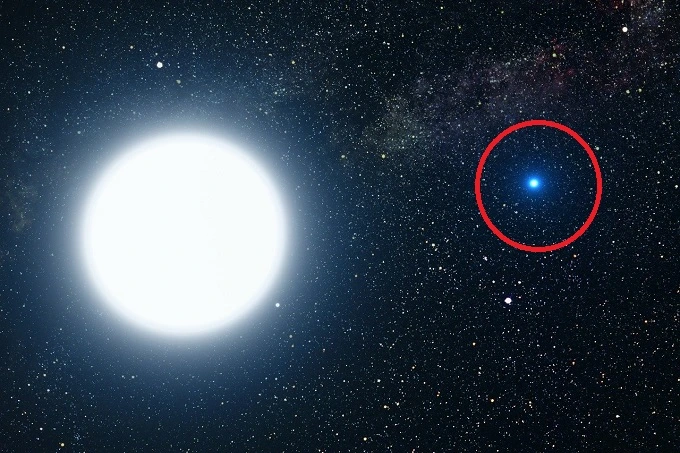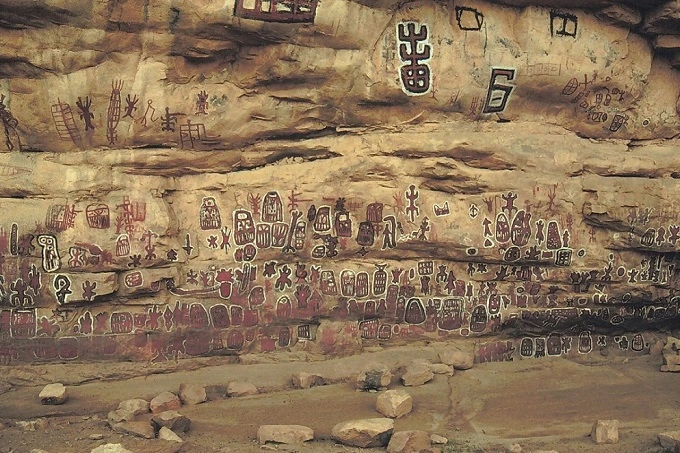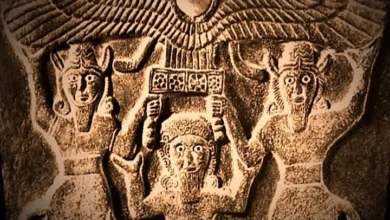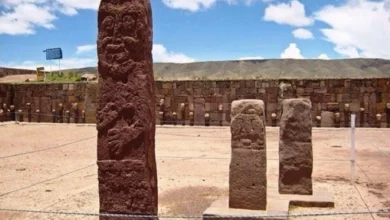Amazing facts of Dogon tribe in the field of astronomy – who taught them?

Mali’s Dogon people, like many African tribes, have had a tumultuous past. They settled in the Bandiagara plateau between the 13th and 16th centuries, where they still dwell now. Their country is an arid, dusty, rocky terrain with cliffs and gorges 500 kilometers south of Timbuktu, scattered with little settlements where people live in mud and straw houses for most of the year.
Both anthropologists were confused by the situation. “The mystery of how humanity may learn about the movement and certain attributes of virtually invisible stars without using any equipment has not been answered,” they said.
The Dogon and adjacent tribes are considered “primitive” by most anthropologists, however, the two million people who make up the Dogon and adjoining tribes disagree. They don’t deserve it, save for the fact that their lifestyle hasn’t altered much over the years.
They have a rich and nuanced philosophy and theology, despite their lack of interest in Western technology. Outsiders who lived with them and embraced their way of life described them as joyful, full-fledged individuals with a thousand-year-old attitude toward life’s fundamental values.
Extraterrestrial visitors from the Sirius Nebula
The Dogon, on the other hand, offer a fantastic claim: they were educated and “civilized” by extraterrestrials from the Sirius star system, which is 8.7 light-years distant. For such a “primitive” and secluded community, they have an extraordinarily comprehensive grasp of astronomy to back up their claim.
They know, for example, that Sirius, the brightest star in the sky, has a companion star that is tiny, dense, and incredibly heavy yet invisible to the human eye. This is completely correct. However, it was not discovered until the middle of the nineteenth century by Western astronomers; it was not described in detail until the 1920s, and it was not photographed until 1970: (due to its faint brightness).
This weird astronomical reality is the foundation of Dogon mythology. It can be seen in their most private ceremonies, sculptures and designs sewn into their blankets, and it is depicted in sand paintings, built into their sacred buildings – motifs that are almost certainly hundreds, if not thousands, of years old.
Communication between planets
Overall, this was regarded as the most strong proof that the Earth had interplanetary links in the recent past – it was an instructional meeting, to say the least. The Dogon’s corpus of knowledge was also analyzed in order to discover if all they say is true or whether their learning originates from an earthly source, such as a passing missionary.
So, in the West, how did they hear about Dogon beliefs?
There is just one primary source, which is thankfully quite comprehensive. In 1931, two of France’s most distinguished anthropologists, Marcel Griol and Germain Dieterlin, began to study the Dogon in detail.

They lived with the tribe virtually every day for the following 21 years, and in 1946, Griol was summoned by Dogon priests to share their most holy secrets.
He took part in their rites and ceremonies, examining the extraordinarily intricate symbolism arising from their central belief in amphibious creatures known as the Nommo, who came from outer space to civilize the Earth as best a Westerner could.
The Dogon venerated Griaule as much as their priests, to the point that a quarter-million tribesmen assembled in Mali in 1956 to pay their homage to him. The two anthropologists’ findings were first published in 1950 in the “Journal de la Societe des Africainistes” in a careful and scholarly paper titled “The Sudanese Sirius System.”
Following Griol’s death, Germaine Dieterlin stayed in Paris and was named general secretary of the Society of Africanists at the Musee de I’Homme (Museum of Man). She put their results into a big book called Le Renard Pete, which was published by the French National Institute of Ethnology in 1965 as the first of a planned series.
Elliptical
These two works demonstrate indisputably that the Dogon belief system is founded on a very precise grasp of astronomy mixed with astrology. At the heart of this system lies Sirius, as well as several stars and planets that they believe circle it.
They also suggest that Po Tolo, Earth’s major companion, is formed of heavier materials and travels in a 50-year elliptical orbit. All of this is correct. Western astronomers, on the other hand, only noticed anything strange about Sirius some 150 years ago. They discovered certain differences in its speed, which they could only explain by supposing that another star is nearby, interfering with Sirius’s movement owing to gravity.
This star was discovered in 1862 by American astronomer Alvan Graham Clark while testing a new telescope. He called it Sirius B. However, it took another half-century following the initial discovery of Sirius’ peculiarities to provide a mathematical and scientific explanation for such a little object with such enormous power.
Sir Arthur Eddington postulated in the 1920s that certain stars are “white dwarfs,” or stars towards the end of their lifetimes that had collapsed and became superdense on their own. For the Dogon variety, the description was correct. But how could Griol and Dieterlen have learned about this notion in the three years between Eddington’s proposal in a popular book in 1928 and their arrival in 1931?
Both anthropologists were confused by the situation. “The mystery of how humanity may learn about the movement and certain attributes of virtually invisible stars without using any equipment has not been answered,” they said.
The two concerns piqued the interest of another scholar, Robert Temple, an American Sanskrit and Orientalist working in Europe. Is it worth accepting the evidence of Dogon’s astronomical expertise, first and foremost? Second, how could they have acquired this information if the answer to the first question is yes?
Wisdom from the past
He became persuaded that the Dogon do indeed possess ancient knowledge, which applies not just to Sirius B, but to the whole solar system, after a thorough perusal of the original texts and a debate with Germain Dieterlen in Paris.
They went on to describe the moon as “dry and lifeless, like dried dead blood.” Saturn was represented with a ring around it in their painting (two more exceptional cases are known when primitive tribes were initiated into this information). They were aware that the planets circled around the sun and kept track of Venus’s movement in their holy structure. The four “major moons” were known to them. Galileo was the first person to see the transit of Jupiter. Their idea that the Earth spins on its axis was right.
They also thought there were an infinite number of stars and that the Milky Way, to which the Earth is linked, was guided by a spiral force. Much of this has been handed down via mythology and imagery among the Dogon people.
Objects on Earth were assumed to represent what was occurring in the sky, but many computations were obscured by the idea of “doubles”; thus, the evidence could not be said to be totally clear. The main facts in the case of Sirius B, on the other hand, seem indisputable. The Dogon picked the tiniest but most important thing they could find to symbolize Sirius B: the grain of their life-sustaining food crop. (Po means (smallest seed), Tolo means (star)).

They also utilized their imagination to convey the massive weight of the mineral content: “All earthly people together cannot move it.”
Temple was particularly fond of their sand paintings. The egg-shaped ellipse might be taken as a sign for the “egg of life” or something else entirely. The Dogon, on the other hand, were sure that it represented an orbit, a fact discovered by the famed astronomer Johannes Kepler in the 16th century and, of course, unknown to untrained African tribes.
They also stressed the significance of Sirius being precisely where he should be, rather not where he could be expected to be – on the ellipse’s border, not in the middle.
So, how did the Dogon come to possess such ethereal knowledge? There is no ambiguity in response to this question for the Dogon priests. They believe that in the distant past, amphibious aliens from the Sirius system came to Earth and gave their wisdom to the initiates, who subsequently passed it on to future generations.
Animals are revered as “watchers of the universe, progenitors of humanity, protectors of its spiritual principles, providers of rain, and masters of water,” as the Nommo refers to them. The Dogon had created pictures on the sand portraying the spinning, whirling fall of Nommo’s “ark,” which he had mistaken for a spacecraft, which Temple found. He remarked, “Descriptions of the ark’s landing are extraordinarily precise.”
The ark is said to have landed northeast of the Dogon area, where the Dogon claim to have come from. The Dogon has described the sound of the ark landing. They say Nommo’s “voice” traveled in four directions during the fall and sounded like the echo of four massive stone blocks struck by young people in a tiny cave near Lake Debo in time with unique rhythms.
The Dogon are most likely attempting to convey a massive vibrating sound. It’s simple to envision yourself standing in a cave, your ears plugged in reaction to the noise. At close range, the ark’s fall must have sounded like a jet aircraft landing. Other accounts concerning the ark’s arrival, such as how it landed on land and kicked up a mountain of dust generated by the whirlwind it caused, were also employed by the Dogon priests. The force of the collision roughened the ground, causing it to slip.
The discoveries of Robert Temple, first published in 1976 in The Sirius Mystery, are both controversial and well-researched. As a consequence, his findings have been presented as proof by both those who believe in extraterrestrial visitation to Earth throughout its early history and others who think the concept is ludicrous (including the vast majority of scientists and historians).




